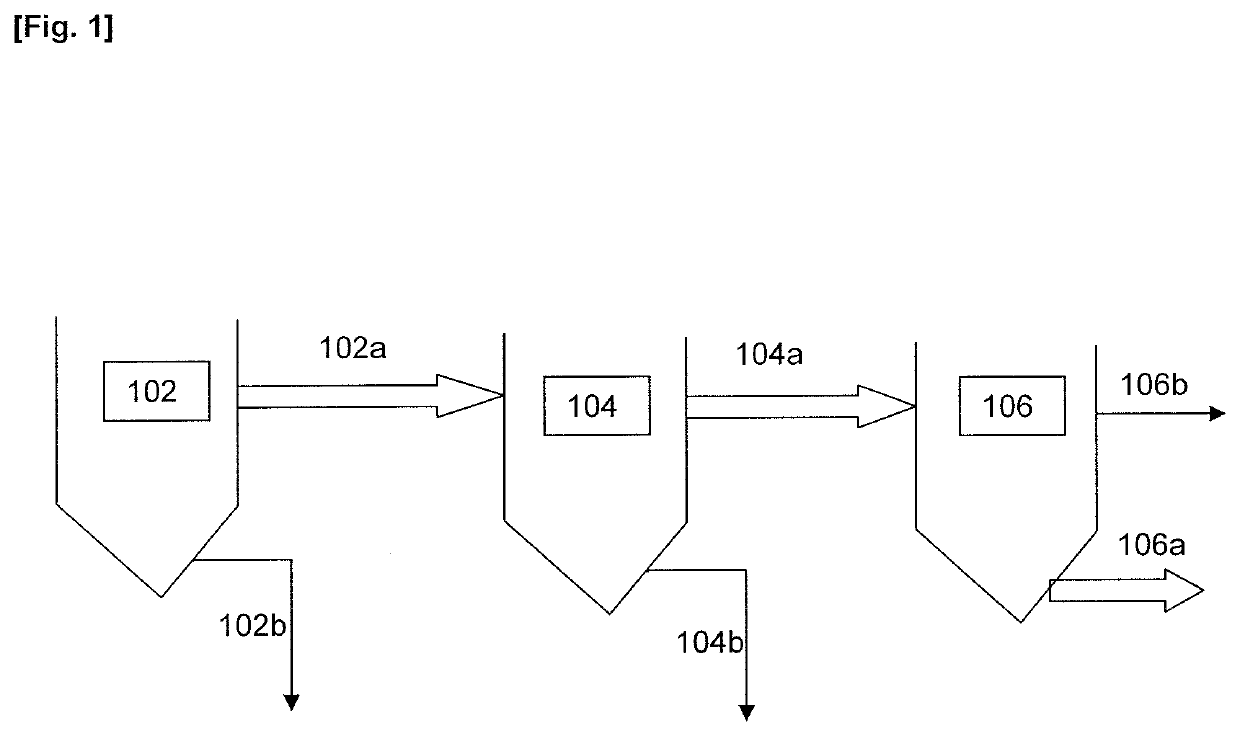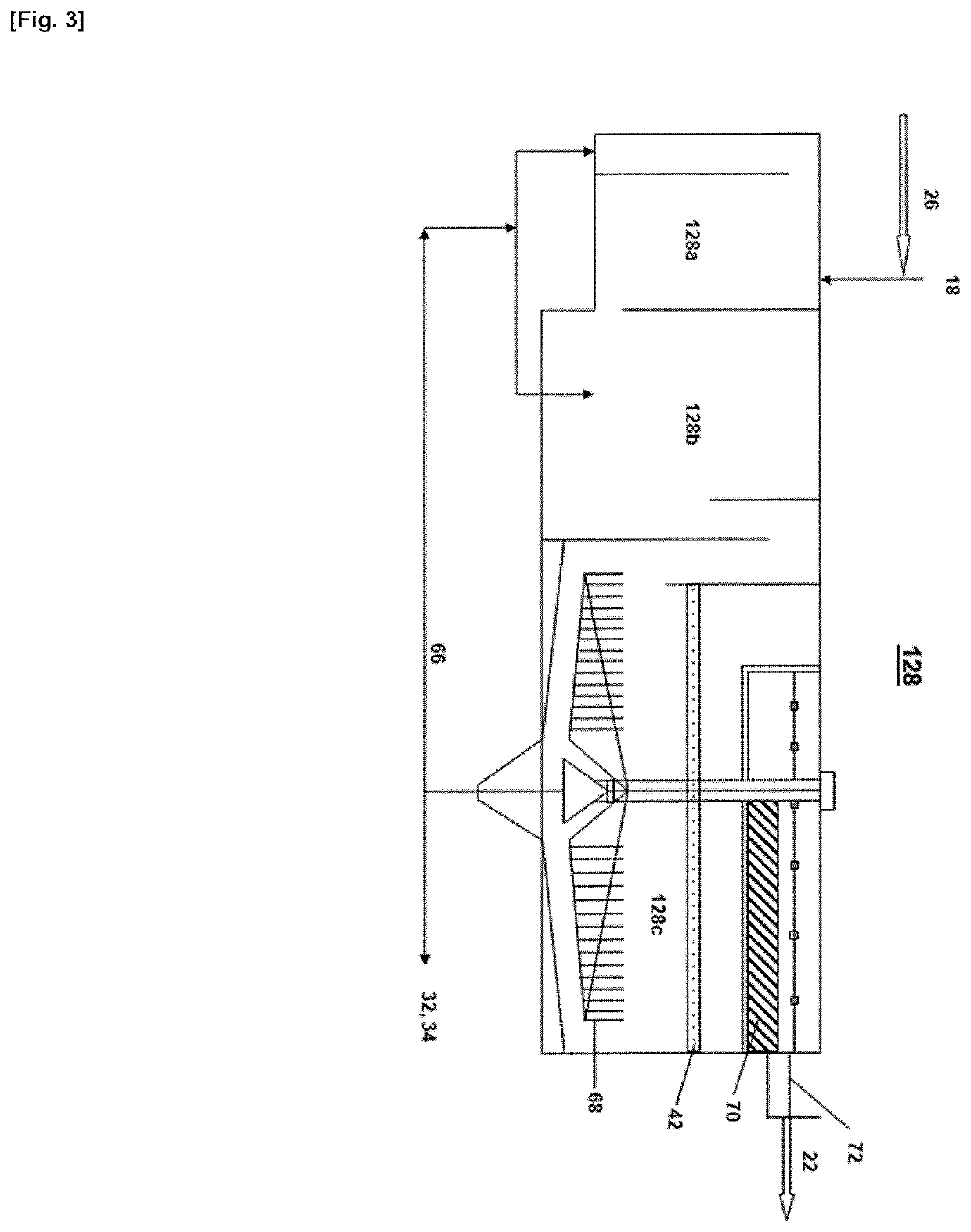Process and System for Treating Waste Water
a waste water treatment and process technology, applied in water/sludge/sewage treatment, settling tank feed/discharge, sedimentation settling tank, etc., can solve the problem of diatomite expressing a higher degree of unbalanced surface potential, achieve sufficient phosphorus removal, reduce the residence time of anaerobic treatment stage, and simplify the biological treatment process
- Summary
- Abstract
- Description
- Claims
- Application Information
AI Technical Summary
Benefits of technology
Problems solved by technology
Method used
Image
Examples
example 1
[0154]The diatomite treatment agent prepared by the method as disclosed herein was shown to have better adsorption capability and was more effective in removing pollutants.
[0155]In this example, two types of influent waste water were used in separate experiments, the first was influent from sewage and the second was influent from mineral processing. The sewage influent was used to test the performance of the diatomite treatment agent in removing biological matters (COD / BOD) and nutrient matters (nitrogen / phosphorus). The industrial mineral processing influent was used to test the performance of the diatomite treatment agent in removing heavy metals. The quality of the influent waste water was as follows:
TABLE 1NoAmountPollutant (from sewageinfluent)1COD445mg / L2BOD280mg / L3Ammonia Nitrogen34mg / L4Total Nitrogen48mg / L5Phosphorus6.17mg / LPollutant (from mineralprocessing influent)6Cu (II)1.773mg / L7Zn (II)146.1mg / L8Pb (II)8.450mg / L9Cd (II)0.556mg / L10Cr (VI)0.014mg / L
[0156]The dosage of diat...
example 2
[0158]Waste water treated by the system as disclosed herein was shown to meet regulatory Discharge Permit Limits.
[0159]In this example, 30-50% of the influent waste water was derived from sewage and 50-70% was industrial-derived from factories, like food processing, soya sauce production, beverage making, etc. The dosage of diatomite treatment agent used was 10-30 mg / L.
[0160]The results of the treatment are shown in Table 3 below.
TABLE 3ActualDischarge PermitActual AverageParametersInfluentLimitEffluentCOD (mg / L)68.3-660 6020.2BOD (mg / L)29-483203.31Suspended Solids29-215206.63(mg / L)Ammonia Nitrogen5.56-42.7280.22(mg / L)Total Nitrogen12.08-50.10 204.59(mg / L)Total Phosphorus0.86-10.6010.07(mg / L)pH6.17-8.43 6.9-9.07.54
PUM
| Property | Measurement | Unit |
|---|---|---|
| size | aaaaa | aaaaa |
| size | aaaaa | aaaaa |
| particle size | aaaaa | aaaaa |
Abstract
Description
Claims
Application Information
 Login to View More
Login to View More - R&D
- Intellectual Property
- Life Sciences
- Materials
- Tech Scout
- Unparalleled Data Quality
- Higher Quality Content
- 60% Fewer Hallucinations
Browse by: Latest US Patents, China's latest patents, Technical Efficacy Thesaurus, Application Domain, Technology Topic, Popular Technical Reports.
© 2025 PatSnap. All rights reserved.Legal|Privacy policy|Modern Slavery Act Transparency Statement|Sitemap|About US| Contact US: help@patsnap.com



